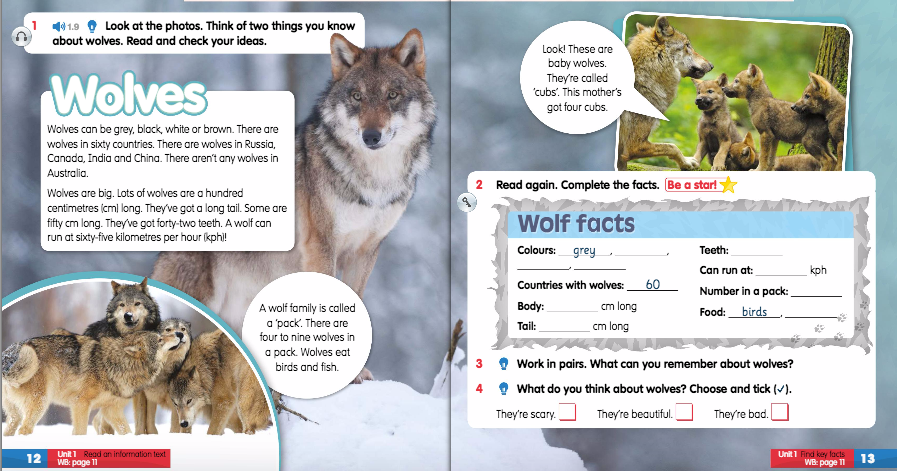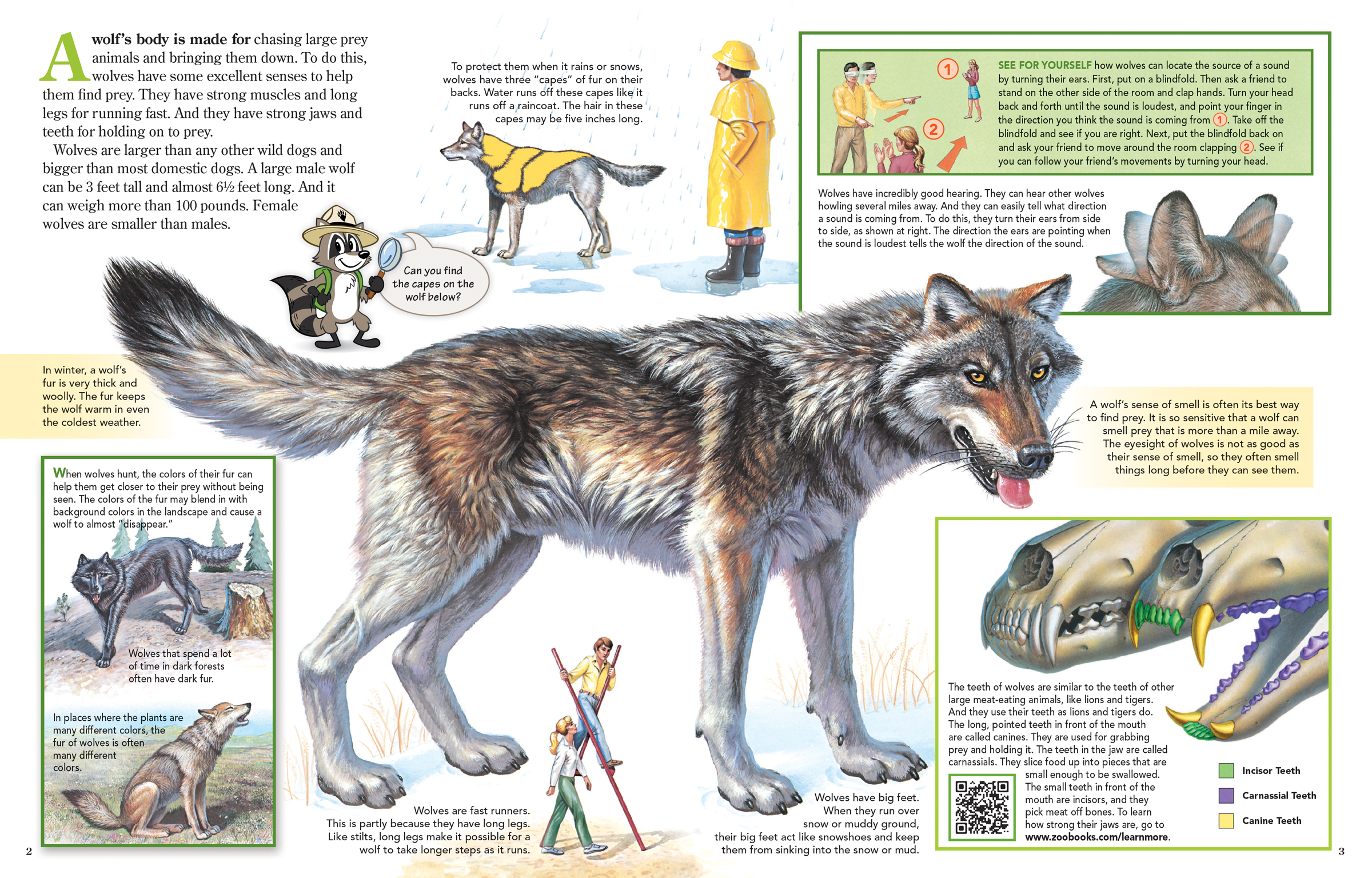| Gray Wolf | Coyote | |
|---|---|---|
| Diet | Elk, deer, caribou, moose, bison, beaver | Rabbits, rodents, deer, elk, carrion |
| Locomotion | Wolves trot at 5 miles per hour, but they can run in short bursts at up to 35 mph. | Coyotes can run up to 25-30 mph. |
The Wolf’s Speed
Shorter bursts of high-speed running allow him to quickly close in on prey, but he can’t maintain his maximum speed for long. He can run about 25 miles per hour for up to 2 miles. For shorter distances, he can run as fast as 40 miles per hour — his top speed.
A wolf can sprint up to 30–35 mph at top speed. They can run at 25 mph for up to 2 miles and even up to 20 minutes. They can trot at 6 mph all day long with their long legs easily covering over 30 miles or more.
Wolves can tirelessly trot or lope for long distances at an average speed of around 5 mph. At this pace, a wolf would average about 12 minutes per mile, which is considerably slower than elite human marathoners or ultramarathoners.
31 – 37 mph
The biting capacity of a wolf is 1,500 pounds of pressure per square inch. The strength of a wolf’s jaws makes it possible to bite through a moose femur in six to eight bites. In comparison, a German shepherd has a biting pressure of 750 pounds per square inch.
Wolves are one of the strongest animals in their habitat, which earned them a reputation as powerful and relentless hunters, especially when they attack in packs. But a single wolf also has enough power to counter even larger animals.
That’s right, when it comes to endurance, we can outrun wolves, cheetahs, and even horses. Now, in the beginning, humans fall short because we’re lousy sprinters. … Each year, a small town in Wales holds the Man Versus Horse Marathon. It’s a 22-mile race between riders on horseback and runners.
… Each year, a small town in Wales holds the Man Versus Horse Marathon. It’s a 22-mile race between riders on horseback and runners.
30 – 40 mph
Even more extraordinary is a wolf’s sense of smell – up to 100,000 times greater than human beings’. Under the right conditions a wolf can smell something up to 300 yards to 1 mile away.
Wolves are the greatest distance runners on the planet. They can trot for literal days. The wolf will win unless the human is a trained athlete. Humans evolved as pursuit predators; we can carry on a run for many miles, long enough to tire out any prey species (medium to large sized ungulates for the most part).
When it comes to escaping a pack of wolves, horses will outrun a wolf any day. Horses are bigger and have more endurance than wolves. A wolf can run at 35 mph at top speed. … Horses choose to turn tail and run when confronted by wolf packs, and most of the time, they are successful in escaping their attack.
… Horses choose to turn tail and run when confronted by wolf packs, and most of the time, they are successful in escaping their attack.
Wolves are with no doubt one of the fastest animals. The fastest wolf, the Arctic wolf (Canis lupus arctos) can run at a speed of 46 mph (74 kph) while the maximum speed at which a human can run is 27 mph (45 kph). It might look like mammals have an advantage as they use all four of their legs to travel, unlike humans.
31 – 37 mph
Recent studies show that the bite force of a wolf can be 1200 psi while the bite force of a hyena is 1100 psi. However, in a fight, the hyena is still more robust and stronger
. If you’re looking for a wolf that can beat a hyena, then that would be the Dire Wolf (possibly the Kenai Peninsula Wolf also).
If you’re looking for a wolf that can beat a hyena, then that would be the Dire Wolf (possibly the Kenai Peninsula Wolf also).
The Hippopotamus has the strongest bite of all land animals at about 1820 PSI. American Alligators have a bite force of about 2125 PSI.
A lion would win in a fight against a wolf. Although lions and wolves are both carnivores with potent fighting abilities, a lion is overwhelmingly larger and stronger than a wolf.
Yes, a wolf is stronger than a human. Almost any wolf can beat a human being in a fight (if the human has nothing on), the average wolf can bite up to 400–500 pounds of bite power. If it is a larger wolf it can bite up to 1,200–1,500 pounds of bite power.
While a wolf can kill a pit bull with its massive 1,500 PSI biting power, it would probably run from a fight unless the pitbull was threatening its pack or the wolf pups.
Wolves are complex, highly intelligent animals who are caring, playful, and above all devoted to family. Only a select few other species exhibit these traits so clearly. Just like elephants, gorillas and dolphins, wolves educate their young, take care of their injured and live in family groups.
Like many large carnivores, wolves are generally afraid of humans and will avoid people, buildings, and roads if possible. The risk of wolves attacking or killing people is low. As with other wildlife, it is best not to feed wolves and to keep them at a respectful distance.
Just like how humans bond the more we look into another human’s eyes, owners and dogs become closer when they share the same long gaze. … So if you see a wolf, don’t try to gaze into its eyes and become best friends — it may not go well.
… So if you see a wolf, don’t try to gaze into its eyes and become best friends — it may not go well.
50 – 80 mph
43 mph
Reindeer: 23 – 31 mph
The wolf is built for travel. Its long legs, large feet, and deep but narrow chest suit it well for life on the move. Keen senses, large canine teeth, powerful jaws, and the ability to pursue prey at 60 km (37 miles) per hour equip the wolf well for a predatory way of life.
All wolves are comfortable in the water and are excellent swimmers. They can swim up to 8 miles and can withstand icy water. Usually, they swim to traverse water obstacles or pursue prey, and up to 25% of their diet is from water. Sea wolves are more proficient swimmers, their diet is 90% seafood.
Wolves can see color, but they don’t see the same colors as humans do. Instead, they only differentiate between yellow and blue colors and have worse color receptors than humans, and they have stronger receptors for grey and black. But wolves don’t rely on their eyesight as some other animals do.
Instead, they only differentiate between yellow and blue colors and have worse color receptors than humans, and they have stronger receptors for grey and black. But wolves don’t rely on their eyesight as some other animals do.
The ostrich runs at 30 miles per hour and has the endurance to keep it up for hours on end, thanks to their remarkable anatomy that minimizes effort while running. Having evolved on the plains of Africa, they are well-accustomed to the heat as well.
Most mammals can sprint faster than humans — having four legs gives them the advantage. But when it comes to long distances, humans can outrun almost any animal. Because we cool by sweating rather than panting, we can stay cool at speeds and distances that would overheat other animals.
youtube.com/watch?v=d8_OgugOBCY”
| Horse | 30 mph |
|---|---|
| Wolf | 35 mph |
| Bear | 35 mph |
| Lion | 50 mph |
| Car | 100 mph |
50 mph
The cheetah is known for its impressive running speed of more than 100km/h (60mph). Lions are more powerful than cheetahs, but not as fast on their feet.
Lions are more powerful than cheetahs, but not as fast on their feet.
1. Dung Beetle. A dung beetle is not only the world’s strongest insect but also the strongest animal on the planet compared to body weight. They can pull 1,141 times their own body weight.
A Lion’s speed is 49.7 miles per hour and the fastest deer breed is about 40 miles per hour.
The average galloping speed of a horse is 25-30 mph, much faster than the speed of the average dog. … This is because, although the average horse is quite fast, they have nothing on their racing counterparts. A racehorse has an average speed of 40-45 mph!
Rhino Running Speeds: All 5 Species
Javan rhinos (Rhinoceros sondaicus) can get up to 30 mph (48 km/h). White rhinos (Ceratotherium simum) are the largest rhinos. They can get to between 25-31 mph (40-50 km/h). Black rhinos (Diceros bicornis) are considered to be the fastest of the rhino species.
Black rhinos (Diceros bicornis) are considered to be the fastest of the rhino species.
#1: Northwestern Wolf
The Northwestern wolf (Canis lupus occidentalis) is known by many names, including the Mackenzie Valley wolf, Canadian timber wolf, and Alaskan timber wolf. It is the largest wolf in the world, with the average male weighing 137 lb, while the average female weighs 101 lb.
Wolves often prey on speedy ungulates such as deer, elk, and moose. This means they have to be fast to be able to keep up with and attack their prey. But just how fast, exactly? How fast can a wolf run, and how long can they maintain these top speeds? Keep reading! In this article, we’ll answer all of these questions and more!
What You'll Learn Today
According to the International Wolf Center, wolves can travel 36 to 38 miles per hour for short bursts; they typically run this fast when hunting speedy prey like antelopes or deer. A wolf’s top speed is considered to be around 40 miles per hour.
A wolf’s top speed is considered to be around 40 miles per hour.
Again, though, they can only maintain these high speeds for relatively short distances. Wolves are built for running, but they do best keeping a slower pace over long distances.
For a great visual of just how fast wolves are able to run, check out the following video of a pair of wolves “racing” a car.
https://www.youtube.com/watch?v=3nPyrIXBCegVideo can’t be loaded because JavaScript is disabled: Wolf Races Woman in Car – Insane SPEED! (https://www.youtube.com/watch?v=3nPyrIXBCeg)
There are two main species of wolf in the world: the gray wolf and the red wolf. Each of these wolf species has many subspecies.
Of the two main species, gray wolves are faster than red wolves. Gray wolves are the ones that can reach top speeds of up to 40 miles per hour.
Gray wolf subspecies include the Arctic wolf, the Great Plains wolf, and the Mexican wolf. The eastern timber wolf is sometimes considered a third distinct species but is usually considered a gray wolf subspecies.
The eastern timber wolf is sometimes considered a third distinct species but is usually considered a gray wolf subspecies.
All of these subspecies are able to run 35 to 40 miles per hour for short bursts and maintain slower speeds for hours on end.
So, we’ve established that wolves can sprint for short bursts and run at a slower pace for much longer periods. But just how far can they travel without having to stop for rest?
Or, perhaps more specifically, how long can they maintain their running speed without stopping?
The answer, of course, depends on how fast they are going in the first place.
If a wolf is sprinting at top speeds of 35 to 40 miles per hour, it will have to stop for a rest, or at least slow down, after a few minutes.
Of course, even when hunting prey, wolves don’t always reach these top speeds, as they require a great amount of energy. Most often when hunting, wolves will run a bit slower, around 25 miles per hour–a speed they can maintain for up to 20 minutes at a time.
Wolves can run at much slower speeds for much longer periods of time. As noted above, they are built for running, so they can trot at slow speeds for hours on end, maintaining this pace all day long and rarely having to stop to rest.
Wolves travel around quite a bit each day in search of food and new territory.
In a single day, a wolf may travel more than 50 miles. Of course, it probably won’t be running the entire time; most likely, the wolf will spend most of the day trotting, or loping, at around 5 to 6 miles per hour, punctuating this slow run with shorter bursts of greater speeds when hunting prey or escaping danger.
Wolves’ bodies are slender and athletic, and the angle of their elbows allows their weight to be perfectly positioned over their legs, which in turn gives them the ideal shape for hours of running. Their long legs allow them to cover vast amounts of ground while expending a minimal amount of energy.
Wolves know how to get around; young wolves especially may travel hundreds of miles away from their home in search of new territory or their own mate. Of course, they don’t travel this far in a single day, but their athletic build and ability to run enables them to travel these great distances over a period of days.
A gray wolf, traveling at top speed, can run up to 40 miles per hour. On average, most wolves can reach top speeds of 36 to 38 miles per hour when escaping danger or hunting prey.
Many people openly dislike and are afraid of wolves. They consider them aggressive animals. This image for many is formed in childhood. Everyone knows what a wolf looks like, but few know his real habits, lifestyle. Few people can answer the question of how many years a wolf lives.
Contents:
Of domestic animals, the wolf looks like a dog with sharp ears. The body length can reach 160 cm, and the height of the wolf at the withers is 95 centimeters.
The body length can reach 160 cm, and the height of the wolf at the withers is 95 centimeters.
The average weight fluctuates around 60 kilograms, although heavier animals have been officially registered. The largest wolves can weigh up to 80 kilograms inclusive. The size of this predator depends on the latitude of habitat: the farther north the latitude, the larger the predator.
More forehead than a dog, the muzzle is bordered by whiskers. The chest is narrow and the back is wide. Long strong paws cannot be called massive. There are small webs between the toes on the paws. The predator has a long thick tail, reaching more than half a meter in length. A distinctive feature of this tail is that it is always down.
The fur, consisting of long guard hairs and a dense waterproof undercoat, has a very low thermal conductivity, which allows the predator to endure the most unfavorable conditions.
The color of the coat depends on the surrounding landscape. Basically, the color of the animal is a combination of white, gray, brown and black. Of course, the color of the coat directly depends on the species to which the predator belongs.
Basically, the color of the animal is a combination of white, gray, brown and black. Of course, the color of the coat directly depends on the species to which the predator belongs.
Although there are more than 35 subspecies in the wolf family, let's consider the most remarkable of them:
The common or gray species is not mentioned here, since the main story will be about it.
Currently, this predator can be found on the territory of some European countries: Poland, Spain, Portugal and Italy, as well as on the territory of the Scandinavian Peninsula, the Baltic States and the Balkans. It lives in such Asian countries as Korea, China, Mongolia, Kazakhstan. The Middle East is inhabited by them only in the north. In North America, it lives everywhere north of Mexico. This predator does not live in South America.
In Russia, the animal can be found everywhere, excluding some islands.
Each species has its own habitat preferences. Wild wolves live in the tundra, semi-desert, steppe, forest-steppe, from the foot of the mountains to the height of alpine meadows. Not afraid to settle next to human habitation.
Having learned where wolves live, let's move on to studying their lifestyle and habits.
This predator mainly obtains food by hunting. As a hunter, he is well equipped. At a speed of 10 km / h, it can run for a very long time without getting tired. Able to reach speeds up to 65 km / h. Small webs between the fingers help him move quickly in the snow.
As a hunter, he is well equipped. At a speed of 10 km / h, it can run for a very long time without getting tired. Able to reach speeds up to 65 km / h. Small webs between the fingers help him move quickly in the snow.
Possessing a very developed sense of smell, a predator is able to smell prey at a distance of more than a kilometer. Vision and hearing are well developed, but the sense of smell is weaker.
These predators prefer to live in packs. The pack is led by an alpha male wolf and an alpha female. Each individual in the flock performs a certain social role. The target of a pack hunt is always a large animal.
During the summer, the flock breaks up, because during this period you can feed yourself and one by one.
There are wild wolves who prefer to live separately from the pack. They hunt from ambush.
When hunting in a pack, several individuals can play the role of beaters, who lead game to an ambush. However, in general, predators, alternately replacing each other, force prey to expend energy faster. Frightening the herd, they accurately identify weakened or sick animals, which they continue to hunt.
Frightening the herd, they accurately identify weakened or sick animals, which they continue to hunt.
Predatory wolves use a long howl to rally the pack and scare away strangers. Like other large predators, they actively mark their territory.
The main object of hunting for wolves are large ungulates: elks, deer, antelopes. They can also slaughter livestock: sheep, cows and horses. If there are few large animals, then wolves can hunt smaller animals: from mice to foxes. In summer, it often feeds on frogs, lizards, and even large insects.
With a shortage of food, it easily switches to plant foods. The wolf is an animal that never disdains carrion.
Can hide food supplies, which they always return to.
The right to breed in a pack belongs only to a pair of leaders.
A newly formed pair leaves the pack to breed. It is worth noting that wolves are monogamous.
Pregnancy of a she-wolf lasts 60-65 days. Then 3-13 blind wolf cubs are born. Cubs begin to see clearly in 12-13 days. Wolf cubs always have blue eyes.
Then 3-13 blind wolf cubs are born. Cubs begin to see clearly in 12-13 days. Wolf cubs always have blue eyes.
While the female is completely occupied with cubs, the whole flock brings her food. At first, wolf cubs feed only on mother's milk. Then they are transferred to meat, which is regurgitated by adults.
By the end of summer, young wolves begin to be trained to hunt.
The female becomes sexually mature at the age of 2 years, and the male - at the age of 3 years.
Wolves in the wild can live up to 15 years. However, most often 4-6 years is how long wolves live. In captivity, the life expectancy of a wolf can be a record - up to 21 years.
Despite the collective reverent care for the cubs, 60-80% die before reaching the age of one.
Previously, there was an erroneous opinion that this predator is a pest of both agriculture and hunting. As a result of year-round hunting, the population has been greatly reduced, and some species have been completely exterminated. By and large, people are the only enemies of the wolf.
By and large, people are the only enemies of the wolf.
Now people, having become more literate in this matter, understand that wolves in nature are orderlies. Now considerable efforts are being made to increase the number of these animals.
Wolf cubs willingly play with humans. But they are still not suitable as a pet, because as they grow up, they begin to show the habits of wolves more and more.
Only wolf fur is of value as an object of hunting. Meat is not eaten.
Little-known facts about wolves you will learn from our video.
Author:
Viktor Proshev
Like this article?
Subscribe to our channel in Yandex.Zen and join the Vkontakte group
Share:
Saiga or saiga is a steppe antelope with an unusual proboscis. The beast can be considered unique: it appeared 50-70 thousand years ago, found the era of mammoths and survived to this day. But such a long history does not help him survive in the modern world - the species is considered endangered. 9Ol000 and genus of saiga. Animal type - chordate, class - mammal, detachment - artiodactyl.
The beast can be considered unique: it appeared 50-70 thousand years ago, found the era of mammoths and survived to this day. But such a long history does not help him survive in the modern world - the species is considered endangered. 9Ol000 and genus of saiga. Animal type - chordate, class - mammal, detachment - artiodactyl.
In appearance, it is a small antelope the size of a goat, with thin legs and a dense build. Height 60-79cm, 110-140 cm long, and also a tail - 8-12 cm. The weight of a saiga is 23-55 kg. Females are slightly smaller than males.
| Body length, m | Height at withers, cm | Weight kg | Length of horns, cm |
| 100 - 140 | 60 - 79 | 23 - 55 | 30 |
Saiga look funny because of their movable proboscis nose. It ends with two large heart-shaped nostrils. Such a nose helps the saiga to survive at different times of the year: in winter it heats the air before letting it into the lungs, and in summer it filters the steppe dust. Males have larger noses.
Males have larger noses.
The seasonal color of the animals is a good camouflage. In summer, the herd merges with the sandy tones of the steppe, and in winter with snow.
In spring and summer, a rare animal of sandy-red color with white chest and belly. In autumn, he puts on a whitish coat to match the color of snow. Summer fur is short - 2 cm, and winter - dense and long up to 7 cm: such wool protects from the wind. The horns of the saiga are smoothly curved and translucent with a dark tip, the size of a head is 30 cm. The females do not have horns. They almost do not differ in color from wool.
18–20%
normal proportion of males in the population.
In 2019, it was 11%.
In the wild, males live 7 years, females - 9-10 years. In zoos and nurseries - up to 12 years. Life expectancy depends on conditions: it is more difficult to survive in the wild than in a safe zoo.
14-20 thousand years ago, this antelope lived in the vast expanses of the steppes of Eurasia and North America. In the historical period, the once single area fell into three parts: European (Eastern Europe), Central Asian (Kazakhstan, Uzbekistan and Turkmenistan) and Central Asian (Mongolia and China).
In the historical period, the once single area fell into three parts: European (Eastern Europe), Central Asian (Kazakhstan, Uzbekistan and Turkmenistan) and Central Asian (Mongolia and China).
18th c. met in Moldova, the vicinity of Kyiv, Ufa, Tambov, Orsk, on the shores of the Black Sea. Over time, habitats have been reduced due to human development.
The saiga lives in steppe and semi-desert natural zones. The range covers several countries: Kazakhstan, Russia, Kyrgyzstan, Mongolia, Turkmenistan and Uzbekistan. In the Russian Federation, saigas live in the North-Western Caspian region: the Astrakhan region and the Republic of Kalmykia. Also, the range of the Volga-Ural populations. In 2018, about 120,000 individuals remained in the world.
In Russia, saigas can be found in the Chernye Zemlya nature reserve, the Mekletinskiy and Stepnoy reserves. The territories are protected from poachers, but this does not limit the freedom of animals - they live freely in the wild steppes.
Saigas are herbivorous animals. They feed on steppe grasses, saltwort, wormwood, sometimes flowers and lichens. In total, there are about 80 species of plants in the diet, among them: prutnyak, black and white wormwood, ephedra, quinoa, mountaineer, licorice, monastic pepper, kermeka, cereal fescue and couch grass, steppe lichen. They do not eat at the root: they bite off the juiciest parts at the top and move to another place.
3 - 6 kg
steppe antelope should eat plant food per day
People come to watering holes during the dry season. In winter, they do not need water because of precipitation, and in spring they eat irises and tulips - they already have a lot of moisture. During periods of severe drought, when food is difficult to find, they come to farmland and feed on local crops, such as rye or corn.
Frame Saiga live in a single herd of 40 to 1000 animals, without leaders. Together they graze, go to the watering hole and move around the steppe. Sometimes they are divided into harems, groups of males and young animals, but they cannot live without a herd for a long time, so they are reunited. They communicate with each other with rumbling and lowing sounds, similar to throat singing.
Sometimes they are divided into harems, groups of males and young animals, but they cannot live without a herd for a long time, so they are reunited. They communicate with each other with rumbling and lowing sounds, similar to throat singing.
Steppe antelopes lead a wild life. Their home is the steppes. Choose places with solid soil of stones or clay, so that it is convenient to run. They do not stay on one pasture for a long time and migrate around the area in search of better food.
People are mastering the steppe spaces, so saigas are losing most of their habitats. They mostly roam within the protected areas.
Saiga rutting season from November to December. Males fight to mate with females. First, they make low sounds - croaking: they bend the trunk in the shape of the letter S, strain it. If other males do not retreat, they fight on the horns. The winner of the fight gets the opportunity to mate with several females. During the rut, males have no time to eat - some individuals weaken and become easy prey for wolves.
15-30 females
must be in the male's harem. But due to hunting, their number has decreased, now there are up to 50 females per male.
Pregnancy lasts five months. Before giving birth, females choose a territory away from watering places. They occupy space without vegetation or in sparse thickets. At the same time, the place should warm up, otherwise the baby will freeze in bad weather. Females give birth to one or two saigas in late spring or early summer.
Newborn weighs 3.5 kg. Within a few hours he is ready to run. A two-week-old baby runs with the herd. The saiga feeds the baby with milk for up to three months; by the end of summer, the saiga calf begins to eat plants. The horns of small saigas grow from birth to a year and a half.
Kalmyks have a belief about the White Elder - the patron of fertility and animals, especially saigas. Hunters do not shoot at animals when they are huddled together. According to legend, at this time the White Elder milks them, and if you harm the beast, you will attract the wrath of the Elder.
Saiga do not let people close to them: they feel the threat emanating from them. But fortunately, they are surrounded not only by poachers - there are many people who help protect and restore the population.
At the Center for Wild Animals of the Republic of Kalmykia, saigas were bred and then released into the wild. Organizations also help, for example, the brands of natural cosmetics Greencosmetics and Davines transferred part of the money from each sale to WWF Russia. To encourage people to protect the endangered species, Saiga Day is celebrated in April.
5150 saigas
were spotted by drones in the North-Western Caspian
in the summer of 2019.

